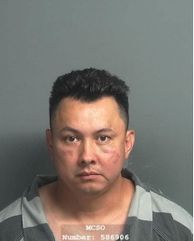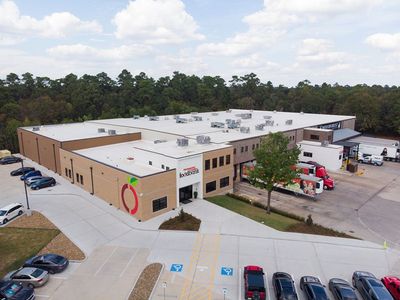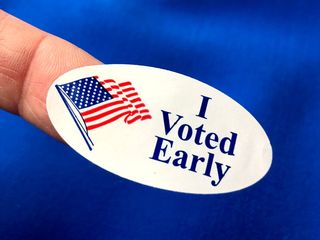- Sections :
- Crime & Public Safety
- Restaurants & Food
- Sports
- More
Categories
LSGCD's Appeal of TWDB's Decision

CONROE, TX - On October 3, 2019, the Texas Water Development Board (TWDB) will hear the District's appeal requesting reversal of the decision that the District's management plan is not administratively complete.
TWDB's Executive Administrator previously determined that the District's management plan was not administratively complete because the plan did not include the desired future conditions (DFCs) from the first round of joint planning in 2010. The District appealed the decision because the 2010 DFCs were superseded by and replaced with the DFCs adopted in 2016 during the second round of joint planning and Chapter 36 of the Texas Water Code (Chapter 36) prohibits reinstatement of an expired DFC. The District also requested reversal of the Executive Administrator's decision because it contradicts TWDB's prior instructions and approval, and is inconsistent with science, policy and Chapter 36.
The debate over which DFC should apply in the District's management plan arose after several permittees successfully challenged the District's 2016 DFCs. Following a successful DFC petition, Chapter 36 requires the districts in a Groundwater Management Area (GMA) to reconvene within 60 days to revise the DFC and adopt a new DFC applicable to the district that received the petition.
Following the petition finding the District's 2016 DFCs no longer reasonable, the GMA 14 districts voted to delay revision of the District's DFCs until the third round of planning when it addressed DFCs for all districts even though the order finding the District's DFCs no longer reasonable did not invalidate any of the other districts' DFCs. The GMA 14 districts voted to delay revision on the basis that DFCs should not be changed in isolation since aquifers cross county lines. GMA 14 determined that changing the DFC for Lone Star GCD, which covers Montgomery County, may require a change in adjacent counties to ensure the overall effects of pumping are consistent with the physics of groundwater flow in the aquifer. GMA 14 did not vote to re-adopt the 2010 DFCs presumably because doing so would effectively be a single county DFC adjustment, which GMA 14 determined was inappropriate and inconsistent with groundwater science.
Chapter 36 mandates that all DFCs must be adopted through the joint planning process by a 2/3 vote of the voting districts in the GMA. No other entity, TWDB included, can establish a DFC. Per Chapter 36, the GMA 14 districts must propose new DFCs by May 1, 2021. However, because the five-year review of Lone Star's management plan was not synced with the five-year DFC planning cycles, the District had to submit its plan for approval before GMA 14 adopted new DFCs in Round 3. Chapter 36 requires DFCs to be included in a management plan unless explained as not applicable. TWDB instructed the District to use the 2016 DFCs and pre-approved a draft plan that included the 2016 DFCs with a statement that they were no longer reasonable as a result of the successful petition. However, when the District formally submitted the management plan, with the 2016 DFCs and an explanation of their limited applicability, TWDB denied approval on the basis that the 2010 DFCs apply.
The District appealed TWDB's determination that the 2010 DFCs apply for a multitude of reasons.
- The 2010 DFCs were superseded as a matter of law by adoption of the 2016 DFCs and cannot be reinstated.
- The 2010 DFCs can only be the applicable DFCs if GMA 14 re-adopts them by a 2/3 vote after notice and hearing.
- The 2010 DFCs were adopted under an old statutory scheme intentionally amended by the Legislature to rectify scientific and due process concerns.
- The 2010 DFCs were derived using an almost identical methodology as, and are substantially similar to, the petitioned 2016 DFCs declared no longer reasonable on the basis that the science was flawed.
- The assumed total pumping used to create both the 2010 and 2016 DFCs was essentially identical and based on void and unenforceable reduction rules.
- Chapter 36 requires use of the best available science and data. The methodologies and assumptions used to derive the 2010 DFCs are not the best available science and data as determined through the DFC petition and reduction rule litigation.
- Using the 2010 DFCs subjects the District to potential litigation by the former litigants who are still waiting for GMA 14 to revise the DFCs.
- Using the 2010 DFCs subjects the District to potential litigation by all persons who were denied notice, hearing and the right to challenge the reinstated DFCs, and by all permittees whose property rights are unnecessarily restricted through management of the reinstated DFCs.
Before filing the appeal, the District attempted to resolve the dispute through correspondence with and a pre-review submission to TWDB. Realizing the District could not comply with TWDB's request for the previously stated technical and legal reasons, the District filed the appeal to ensure Chapter 36 is followed and to protect the due process and property rights of all affected persons.
The District has requested that TWDB approve its plan as submitted. Under Chapter 36, the District's explanation of the limited applicability of the DFCs renders the District's plan administratively complete and all administratively complete plans shall be approved. Approval of the plan will let GMA 14 conduct its statutory work without interference from entities not authorized to determine DFCs. DFCs are long-term goals that dictate aquifer conditions 50+ years into the future. Chapter 36 contemplates that DFCs may be in flux following a successful petition while the mandated administrative and due process procedures are carried out. The District will update its plan after new DFCs are adopted.
The District understands this scenario is one of first impression for TWDB. If TWDB believes this appeal revealed areas where additional clarification from the Legislature could enhance the process, TWDB can suggest statutory revisions during the next legislative session. Until then, TWDB must follow the current statute, which mandates approval.
If TWDB denies the District's appeal, the District will be forced to seek any and all available remedies to ensure compliance with Chapter 36 and protect the constitutional rights of all affected persons. Future actions may include mediation and filing suit in Travis County Texas, if necessary.
TWDB's Executive Administrator previously determined that the District's management plan was not administratively complete because the plan did not include the desired future conditions (DFCs) from the first round of joint planning in 2010. The District appealed the decision because the 2010 DFCs were superseded by and replaced with the DFCs adopted in 2016 during the second round of joint planning and Chapter 36 of the Texas Water Code (Chapter 36) prohibits reinstatement of an expired DFC. The District also requested reversal of the Executive Administrator's decision because it contradicts TWDB's prior instructions and approval, and is inconsistent with science, policy and Chapter 36.
The debate over which DFC should apply in the District's management plan arose after several permittees successfully challenged the District's 2016 DFCs. Following a successful DFC petition, Chapter 36 requires the districts in a Groundwater Management Area (GMA) to reconvene within 60 days to revise the DFC and adopt a new DFC applicable to the district that received the petition.
Following the petition finding the District's 2016 DFCs no longer reasonable, the GMA 14 districts voted to delay revision of the District's DFCs until the third round of planning when it addressed DFCs for all districts even though the order finding the District's DFCs no longer reasonable did not invalidate any of the other districts' DFCs. The GMA 14 districts voted to delay revision on the basis that DFCs should not be changed in isolation since aquifers cross county lines. GMA 14 determined that changing the DFC for Lone Star GCD, which covers Montgomery County, may require a change in adjacent counties to ensure the overall effects of pumping are consistent with the physics of groundwater flow in the aquifer. GMA 14 did not vote to re-adopt the 2010 DFCs presumably because doing so would effectively be a single county DFC adjustment, which GMA 14 determined was inappropriate and inconsistent with groundwater science.
Chapter 36 mandates that all DFCs must be adopted through the joint planning process by a 2/3 vote of the voting districts in the GMA. No other entity, TWDB included, can establish a DFC. Per Chapter 36, the GMA 14 districts must propose new DFCs by May 1, 2021. However, because the five-year review of Lone Star's management plan was not synced with the five-year DFC planning cycles, the District had to submit its plan for approval before GMA 14 adopted new DFCs in Round 3. Chapter 36 requires DFCs to be included in a management plan unless explained as not applicable. TWDB instructed the District to use the 2016 DFCs and pre-approved a draft plan that included the 2016 DFCs with a statement that they were no longer reasonable as a result of the successful petition. However, when the District formally submitted the management plan, with the 2016 DFCs and an explanation of their limited applicability, TWDB denied approval on the basis that the 2010 DFCs apply.
The District appealed TWDB's determination that the 2010 DFCs apply for a multitude of reasons.
- The 2010 DFCs were superseded as a matter of law by adoption of the 2016 DFCs and cannot be reinstated.
- The 2010 DFCs can only be the applicable DFCs if GMA 14 re-adopts them by a 2/3 vote after notice and hearing.
- The 2010 DFCs were adopted under an old statutory scheme intentionally amended by the Legislature to rectify scientific and due process concerns.
- The 2010 DFCs were derived using an almost identical methodology as, and are substantially similar to, the petitioned 2016 DFCs declared no longer reasonable on the basis that the science was flawed.
- The assumed total pumping used to create both the 2010 and 2016 DFCs was essentially identical and based on void and unenforceable reduction rules.
- Chapter 36 requires use of the best available science and data. The methodologies and assumptions used to derive the 2010 DFCs are not the best available science and data as determined through the DFC petition and reduction rule litigation.
- Using the 2010 DFCs subjects the District to potential litigation by the former litigants who are still waiting for GMA 14 to revise the DFCs.
- Using the 2010 DFCs subjects the District to potential litigation by all persons who were denied notice, hearing and the right to challenge the reinstated DFCs, and by all permittees whose property rights are unnecessarily restricted through management of the reinstated DFCs.
Before filing the appeal, the District attempted to resolve the dispute through correspondence with and a pre-review submission to TWDB. Realizing the District could not comply with TWDB's request for the previously stated technical and legal reasons, the District filed the appeal to ensure Chapter 36 is followed and to protect the due process and property rights of all affected persons.
The District has requested that TWDB approve its plan as submitted. Under Chapter 36, the District's explanation of the limited applicability of the DFCs renders the District's plan administratively complete and all administratively complete plans shall be approved. Approval of the plan will let GMA 14 conduct its statutory work without interference from entities not authorized to determine DFCs. DFCs are long-term goals that dictate aquifer conditions 50+ years into the future. Chapter 36 contemplates that DFCs may be in flux following a successful petition while the mandated administrative and due process procedures are carried out. The District will update its plan after new DFCs are adopted.
The District understands this scenario is one of first impression for TWDB. If TWDB believes this appeal revealed areas where additional clarification from the Legislature could enhance the process, TWDB can suggest statutory revisions during the next legislative session. Until then, TWDB must follow the current statute, which mandates approval.
If TWDB denies the District's appeal, the District will be forced to seek any and all available remedies to ensure compliance with Chapter 36 and protect the constitutional rights of all affected persons. Future actions may include mediation and filing suit in Travis County Texas, if necessary.
Comments •

















